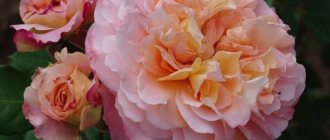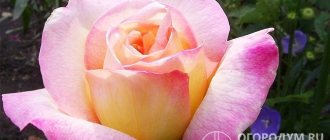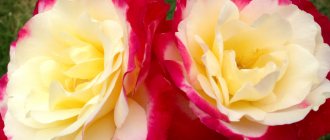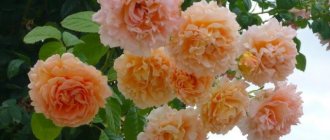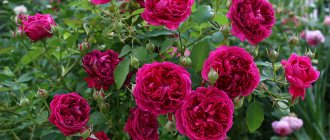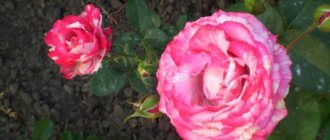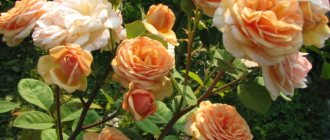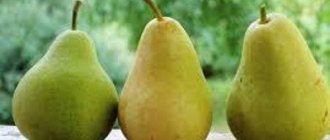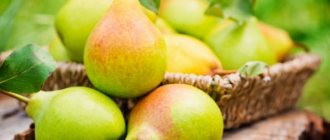Rose Kerio - what kind of variety is it, history of creation
The hybrid tea rose Kerio was bred by Dutch breeders in 2002. The Lex+ company, where this miracle was born, is the winner of many international competitions. Since the variety was bred for the purpose of cutting into bouquets, this tea rose hybrid can stand in a vase for up to 10 days, leaving its original appearance and aroma. This plant is very popular in many countries of the world, including Russia.
Rosa Kerio
Brief description, characteristics
The yellow rose Kerio, thanks to its main characteristics, is one of the best for use in bouquet arrangements. It is found in almost every flower shop, due to its visual appeal and ability to maintain a marketable appearance for a long time.
Main characteristics of the rose:
- erect stems not exceeding 70 cm in height;
- bush width is about 60 cm;
- average number of spines;
- medium-sized glossy dark green leaves;
- single-flowered stems (sometimes inflorescences of 3-4 flowers may appear);
- the flowers are double, large, reaching 13 cm in diameter, but their average width is 9 cm;
- The color is bright yellow with a thin orange border around the edge of the petals.
Important! The bright color most often remains throughout the entire flowering period, but under bright sunlight it can become lighter.
Advantages and disadvantages of the variety
The advantages of the Kerry rose:
- ability to withstand harsh climatic conditions;
- delicate, subtle, honey aroma;
- long flowering period;
- immunity to most diseases and pests;
- the flower can stay in a vase for more than 10 days.
Disadvantages of the plant:
- the flower is sensitive to mineral fertilizers, so you need to be careful and monitor their quantity;
- susceptible to attack by flower beetles.
The flower has few shortcomings, and they are quite easy to fix. You just need to follow the rules for caring for roses and carry out disinfection against pests.
Use in landscape design
Yellow flowers are used by many landscape designers. They can be either an independent decorative element or combined with other plants. It is not recommended to plant them next to other varieties of roses and plants with yellow flowers. Against the background of bright Karyo, other yellow shades will fade.
Important! Flowering can last the whole summer. It is better to cut flowers for bouquets early in the morning.
Kerio in a flowerbed with other flowers
Characteristics
- The rose is quite winter-hardy; according to the United States Department of Agriculture (USDA), its frost resistance corresponds to zone 6. This means that the plant can safely winter at a temperature of -23.3°C;
- Resistance to precipitation is above average. The petals do not lose their aesthetic appearance when exposed to rain, and they are not afraid of the wind;
- the aroma is weakly expressed, some connoisseurs detect honey notes and a slight scent of lemon balm in it;
- Kerio's immunity is very good, which is confirmed by numerous reviews from rose growers. The crop resists powdery mildew and black spot well, but in unfavorable years it can still get sick;
- This variety is excellent for cutting. A long, strong stem and a dense, slightly crumbling bud allow the bouquet not to lose freshness for more than 10 days.
Growing a flower, how to plant it correctly in open ground
In order for the Karyo rose to bloom and delight the owner with its appearance, you need to follow some planting rules. Proper planting will ensure full growth and development of the plant.
In what form is planting carried out (seeds, seedlings, etc.)
Rose Aspirin
In order to preserve all the properties of the hybrid, planting must be done with seedlings. They can be purchased at most flower shops or at special fairs.
What time does boarding take place?
Planting is carried out in spring or autumn. The spring option is preferable. When choosing seedlings, you should pay attention to specimens with a closed root system and a well-developed central root.
Selecting a location
Rose Kerio should be planted in a well-lit, sunny place, ventilated but protected from drafts.
How to prepare the soil and flower for planting
To prepare the seedlings for planting, you need to keep them in a cool, shaded place for several days. This could be a cellar or a refrigerator. The soil should be nutritious and with good breathability, loamy, with a low acidity level.
Step by step landing procedure
Landing should be done as follows:
- Dig a hole, the width and depth of which is about half a meter. If the root system is powerful, the hole should be deeper. Place a drainage layer at the bottom of the hole.
- Add 1-2 buckets of manure, peat, river sand and wood ash to the excavated soil.
- Place the seedling in the hole.
- Cover the seedling with soil so that it covers all the voids. Particular attention should be paid to the roots.
- The soil on top needs to be thoroughly compacted and watered. Then pour a mound about 10 cm high on top. It can be removed only after 2-3 weeks, when the plant has taken root in its new location. After this, the seedling is watered again.
To make it more convenient to water the plant, you can dig small sides around it and mulch the bush with straw.
Important! After planting, the Kerio rose cannot be fertilized. During the first year of life, the bush should develop independently.
Features of wintering
Another important point in rose care is replanting. It is carried out as needed if the bush begins to develop poorly. The best period for the procedure is during the waxing phase of the moon.
Preparing for winter
The variety is well adapted to the Russian cold, but it should be covered for the winter. Before this, unripe shoots are cut from the bush, the remains of buds and leaves are removed. The earthen circle is hilled up and mulched. All activities are carried out when the air temperature drops to zero.
Plant care
Caring for Kerry roses is not difficult. The main thing is to follow the regime of watering, fertilizing, pruning and flowering and properly prepare it for winter.
Watering rules and humidity
Rosa Anastasia
Kerios like medium soil moisture levels. Don't water them too much or too often. Otherwise, root rot may occur. Watering is carried out under the bush; water should not fall on the leaves. The frequency of water treatments should be adjusted based on weather conditions. In the heat, evening daily watering is useful, but after rain it should not be done.
Important! The water temperature should be about +15-16 °C. It is also important that it is well settled.
Fertilizing and soil quality
Feeding for Kerio roses is necessary in the same way as for other varieties of roses. When planting a seedling, mineral fertilizers with a high nitrogen content are applied. During the period of bud formation, potassium and phosphorus are added to the soil. Sometimes using organic fertilizers such as cow dung solution is helpful.
Feeding roses with mineral fertilizers
Pruning and replanting
Pruning is done throughout the season. The successful development and flowering of roses of this variety depends on it. Stages of pruning:
- The first, most important pruning is in early spring. All branches that were damaged during the winter or dried out are removed.
- For the Kerio variety, it is enough to leave shoots about 16 cm long.
- In the summer, all inflorescences that have already bloomed are cut off.
- In the fall, drastic pruning is carried out again. During this period, shoots are cut to 20 cm.
Important! In mid-October, it is necessary to pinch out all the upper parts of the shoots that are not fully formed. At this time, the plant begins to prepare for the winter period.
Before transplanting, a layer of drainage is poured onto the bottom of the hole in which the plant will be placed. This procedure is carried out using the transshipment method. The plant is replanted together with a lump of earth so that the fragile roots are not damaged. The resulting voids are filled with soil.
Features of wintering a flower
The plant begins to prepare for winter in the fall. At this time, watering is reduced and soil loosening stops. At the end of October, the last feeding of the season with mineral fertilizers is carried out. The bush is inspected and treated for pests and diseases. Autumn pruning is carried out and a shelter is created in the form of a frame, covered with warm protective material and polyethylene.
Origin of the variety
The variety was bred in the Netherlands by breeders of the famous floriculture nursery Lex+, specializing in creating exclusive roses with high aesthetic qualities, disease resistance and frost resistance. Registered by the originator in 2002 under the name Lexoirek, and presented to the general public under the name Kerio. In the catalogs of some countries it is listed as Lexories or Luxuries. Initially, the variety was created for cutting and industrial cultivation in greenhouse conditions, but, thanks to its excellent health, exquisite forms and eye-catching color, it very quickly won the hearts of gardeners around the world.
"Kerio" is highly valued by florists and amateur gardeners
Rose blossom
Rose Kahala
During the flowering period, Kerio roses are beautiful; they emit a subtle, barely perceptible aroma. Kerio is a re-blooming variety, so it decorates the garden with its flowers throughout the summer.
Flowering variety Kerio
Period of activity and rest
Flowering begins in June and ends at the end of summer. In the fall, Kerry begins to prepare for the winter period - a period of rest.
Care during and after flowering
The main care for roses of this variety is pruning, fertilizing and watering. The flowers are fed twice a season: in May with complex and mineral nitrogen fertilizers. The second time - after the first wave of flowering, in mid-summer, with phosphorus and potassium fertilizers. Sometimes it is possible to add organic solutions. Added dry, they can burn the sensitive root system of the flower.
What to do if it doesn’t bloom, possible reasons
In the first year, the Kerio rose does not bloom. The shoots of adult flowers always end in an inflorescence. If this does not happen, you should think about the following factors:
- incorrectly selected landing site;
- improper care and pruning;
- root growth;
- bacterial burn;
- aging of the plant.
Once the cause is identified, it must be eliminated.
Important! If the Karyo rose has aged, it is worth carrying out drastic pruning for the purpose of rejuvenation. Or resort to its reproduction.
How to choose a suitable place and plant a Kerio seedling
Rosa Kerio demonstrates her best qualities if the following conditions are met:
- sunlight in the morning and/or evening and light partial shade during the hottest hours;
- protection from sudden gusts of cold wind;
- fertile soil, well permeable to water and air with an acid-base balance in the range of 5.6–7.3 (the rose will not take root in a swampy, saline, rocky, sandy substrate);
- lack of groundwater approaching the soil surface closer than a meter.
Direct sun rays of Kerio roses are not terrible - even fading, it retains its decorative effect
A high-quality seedling at the age of 2–3 years has a developed root system about 25 cm long and 3–5 shoots 20–30 cm high. The roots and stems should be flexible, not dry, without peeling, spots of mold and rot, and uniform in color.
Buying a rose seedling from your own hands is a big risk, look for a nursery with a good reputation located in your region
You can plant roses in spring (late April-May) and autumn (September-October). But the second option is only suitable for the south of Russia. The depth and diameter of the planting hole is 50 cm, the distance between neighboring bushes when planting several specimens is about 40 cm. Drainage is poured into the bottom with a layer of 5–7 cm, then the hole is filled about a third with purchased soil for roses or a mixture of humus, turf soil and coarse soil. sand (3:2:1) with the addition of rose fertilizer.
Soil for roses grown at home is quite suitable for filling a planting hole
Before planting, the exposed root system of seedlings is soaked in warm water or a biostimulant solution for 4–6 hours. The procedure itself does not have any distinctive features compared to other garden crops: the soil is moderately moistened, the rose is planted on a “mound” of soil, straightening the roots, the hole is filled with soil, simultaneously compacting it. The planted plant is watered again (10–15 l) and mulched. Be sure to check the position of the root collar - it should be 5–7 cm below ground level.
When planting a rose, be sure to straighten the roots so that they do not stick up and to the sides, and when filling the hole with soil, periodically compact it, avoiding the appearance of “air pockets”
Video: correct planting of roses
The rose is replanted only with a lump of earth on the roots. The pit is prepared in the same way as when planting for the first time. The root collar is buried to the previous level.
Flower propagation
Rose Kerio is propagated by cuttings. They are cut directly from the bush after the first wave of flowering. For cutting, only faded or, conversely, flowering shoots are selected. They are cut in the evening or early in the morning. The length of one cutting should be no less than 12cm and no more than 16cm. Flowers and thorns are completely removed from them. Leaves are removed completely or shortened to 1/3 of their length.
Planting takes place in mid-July. Prepared cuttings are planted immediately in open ground, the lower part is pre-treated with a root growth accelerator.
Pros and cons of the Kerio variety
Advantages:
- Classic tea roses of rich yellow color;
- Large but neat buds;
- Compact shrub;
- Frost-resistant variety;
- Not afraid of hot weather;
- Suitable for cutting.
Flaws:
- Often gets sick and becomes a victim of pests;
- There are some nuances in care;
- Does not bloom well in the rain;
- Almost no smell.
Diseases, pests and ways to combat them
Roses of the Kerio variety are immune to most diseases and pests. But they are often attacked by such unpleasant insects as aphids. To combat it, you can use a soap solution, wash it off with a powerful stream of water, or treat it with an insecticide.
Damaged Kerio bud
Rose Kerio is a worthy representative of hybrid tea roses. Her beauty simply defies description. This flower is a must see with your own eyes.
Pests
Microscopic spiders have appeared on the plant, and the rose is gradually becoming covered with cobwebs, what should I do?
Spider mite
Are small green insects destroying your rose? Effective methods of pest control.
Green rose aphid
Caterpillars have appeared on the rose and are twisting the leaves of the plant, how to deal with the pest
Rose leaf roller
Flat bumps have appeared on the shoots of the rose or on the underside of the foliage, how to deal with the pest
Rosen scale insect
To prevent fungal diseases, you need to use fungicides. Spraying of roses is carried out in unfavorable weather, with high air humidity and damp soil.
Advantages and disadvantages
This rose has a large number of advantages, which allows it to remain relevant to this day. But the variety also has its drawbacks that are worth paying attention to. Only by comparing them with other species can one determine how critical they are.
Kerio flowers remain decorative in the rain and gusts of wind
Main advantages:
- bright shade of petals;
- dense, large bud;
- long-term preservation of flower freshness;
- strong, stable shoots;
- long, abundant flowering;
- high commercial qualities;
- low susceptibility to weather factors;
- good winter hardiness;
- resistance to common crop diseases.
Flaws:
- the variety is not capable of self-cleaning, so faded buds need to be cut off;
- high cost of seedlings against the backdrop of increased demand;
- sensitivity to excess organic matter in the soil.
Important! During prolonged cloudy and cool weather, the petals of the Kerio rose may take on a pink tint.
Agricultural technology
Despite the plant’s good resistance to unfavorable climatic factors, the planting location should be chosen to be sunny, but with diffuse partial shade during the period of greatest solar activity. A little ventilation of the area will help keep the spread of fungal diseases under control, but drafts should be avoided. The soil should be nutritious, loose, with neutral acidity. Caring for the variety is usual, including timely watering, fertilizing and pruning. The soil in the rose garden should be kept clean. Do not forget that a faded flower should be removed in a timely manner so that the young buds can open in time. If the coming winter is predicted to be snowless and very cold, the bush needs to be covered.
Kerio is a very unpretentious rose that will not disappoint even a novice rose grower. The plant is happily used in landscape design, planted in flower arrangements or alone. The variety shows good results in greenhouse forcing, where it is grown for sale - it is most in demand in flower shops. Positive reviews from flower growers indicate the wide popularity of the plant due to its good winter hardiness and resistance to fungal diseases.
Very often, when a person wants to give some flowers and does not know which ones his chosen one likes, they are always advised to buy roses. Indeed, it is rare to meet a person who does not like these wonderful delicate flowers. But roses in a vase will quickly wither, but if you plant and grow a rose, it will delight you and your loved ones for many years. One of the best options for planting is the hybrid tea rose Kerio, a description of which you can find in this article.
